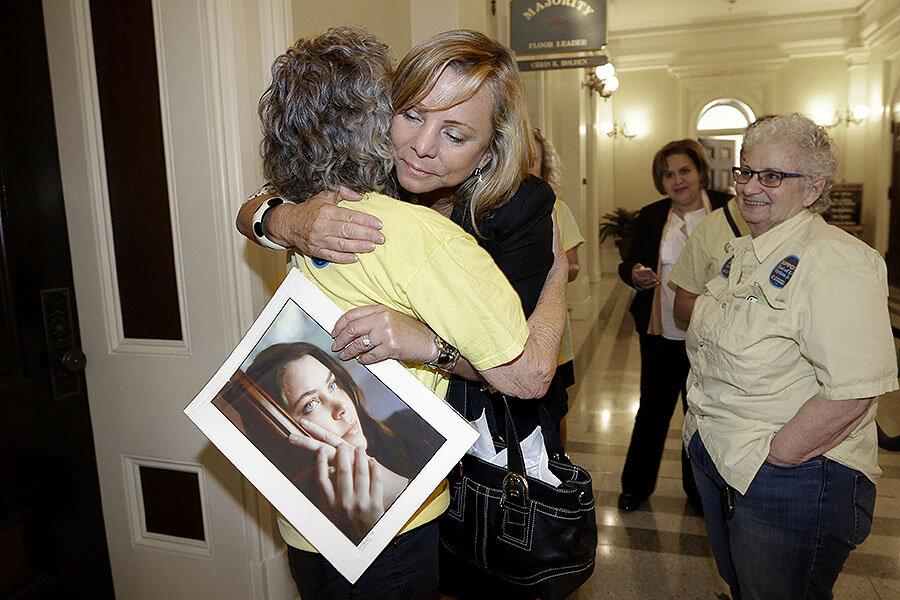Why California may now be ready to legalize assisted suicide
Loading...
After debating the issue on-and-off for years, California's state Assembly voted, 43-34, to legalize physician-assisted suicide on Wednesday, leaving advocates on both sides of the issue to await a Senate vote expected by the end of the week.
The Senate is predicted to approve the measure, which, unless Gov. Jerry Brown vetoes it, would put the law into effect in 2016.
Legalizing assisted suicide, or “aid-in-dying,” would be in line with a majority of Californians’ views. A poll from July 2014 found that 64 percent would approve giving “a terminally ill person, who is mentally competent, the right to request and receive a prescription for life-ending medication from a physician.”
But after years of high-profile media attention, why is the issue getting legal approval now in the nation’s most populous state?
Many California assisted-suicide advocates attribute the change to Brittany Maynard. Maynard, a 29-year old Californian diagnosed with terminal brain cancer, captured the attention and emotions of millions of people last fall when she publicized her decision to end her life with physician-prescribed barbiturates, a choice made with the support of her family. Maynard, her new husband, and her mother, all clearly anguished but adamant about the right to “die with dignity,” moved to neighboring Oregon, where assisted suicide is legal.
The YouTube video Maynard created to explain her choice has received nearly 12 million views, in addition to widely-shared clips. In November, following her death, a People magazine profile broke all of Time, Inc.’s records for digital views, with 16 million.
Maynard’s supporters were hopeful that the story could put new energy into legalizing assisted suicide around the country. At the time of her death, only four states allowed assisted suicide: Oregon, Washington, Montana, and Vermont.
But change has come slowly. While similar measures were debated in California – as they also had been in 1992, 2002, and 2007 – as well as New Jersey, New York, Maine, and Colorado, all were defeated.
Support for physician-assisted suicide is relatively bipartisan, and now stands at 56 percent nationally, according to a Gallup poll. However, strong opposition has come from Catholic groups. Pope Francis has denounced euthanasia as a symptom of a “throwaway culture” that values people only for their productivity.
Disabilities’ rights groups are also concerned, worrying that the high costs of health care may pressure patients and their caretakers to choose suicide without exploring other options, or that legalization leaves fatal prescriptions open to abuse. Assisted suicide laws typically require that the patient have been given six months or less to live, a difficult and imprecise diagnosis.
For many, assisted suicide presents a moral dilemma. Here's how Claire Andre and Manuel Velasquez at Santa Clara University framed the issue:
The case for assisted suicide is a powerful one--appealing to our capacity for compassion and an obligation to support individual choice and self determination. But, the case against assisted suicide is also powerful for it speaks to us of a fundamental reverence for life and the risk of hurling down a slippery slope toward a diminished respect for life.
Emphasizing choice and quality of life, Maynard’s journey put a young, relatable face to an issue often discussed abstractly. Explaining that she feared debilitating pain, cognitive changes, and having her family watch a slow demise, she insisted, “I do not want to die. But I am dying. And I want to die on my own terms.”
Support for similar bills may rest on subtle nuances like these. For decades, Gallup polls have found majority support for a doctor’s right to “legally end a patient’s life by some painless means.” When the word “suicide” appears, however, responses are more negative – a perspective that Maynard may have helped change in her home state.






